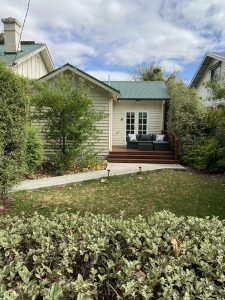
Our apartment in Penola
This post follows on from A few days in the Coonawarra – getting there
Our day started with a check of the weather.
Despite it being the middle of Summer, it seemed the weather was going to be mild, so I was glad I’d packed for both hot and mild weather. With a decision on suitable attire for the day made, the next decision was where in Penola would we find the best coffee?
Penola offered 2 choices for coffee as well as 2 bakeries. We chose Moss and Wild, which was on the list of recommendations from our tour host. The coffee was excellent; however, the food choices were toasties or baked goods, which didn’t fit our needs. They did, however, look tasty.
With a coffee under our belts, we headed back to our apartment and met Simon, the co-owner of Coonawarra Experiences. Consistent with our earlier dealings in arranging our tour Simon was ready to answer all our questions, including a last-minute request to visit Penley Estate.
Unfortunately, Penley closed their tasting room during Covid and not reopened it. It seemed I would have to settle with a purchase of a couple of bottles of their Cab Sav from the Royal Oak Hotel. Penley is the family wine business of the Tolley sisters, a famous South Australian wine family. I’d been a fan of their wines for a while, so I was disappointed that we couldn’t make a visit. Penley offers a range of traditional varieties made in a contemporary style.
While we have had good experiences with shared tours on this occasion, we decided to have a private tour as it offered the most relaxed and flexible option. Sure it was a bit more expensive, but it was worthwhile.
As we quickly came to realise that Coonawarra is a very small region by Australian standards, and our first stop, Parker Estate, was genuinely within walking distance from where we were staying in Penola.
Our early start made it easy to commence our tasting with sparkling wine, and from there, we moved to the reds, for which the region is famous. It quickly became obvious that my favourite person and I were seeing different things in the wines. I had grown up with the Coonawarra signifying Cabernet, whereas my favourite person had come to red wine only relatively recently and was very much a fan of lighter fruit-forward wines and very much a fan of Pinot Noir from the Adelaide Hills. She had thought that she would not enjoy the wines as much as me. However, she quickly found that the region’s Shiraz was very much to her liking being brighter and smoother in texture. That revelation shaped the rest of our tasting journey, as I found myself more open to the region’s Shiraz.
I was also surprised at just how much Shiraz was grown in the region. In fact, as I did some further reading on the Coonawarra, I discovered that Redman’s, a famous producer of the region, grows more Shiraz than Cabernet.
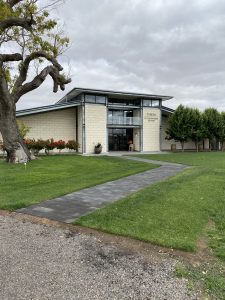
We spent an unhurried hour at Parker before hopping back in the car for the short journey to Wynns. Wynns was truly the highlight of our two days in the region, and that was not at all what I had anticipated.
Wynns’s story is the story of the region. John Riddoch established the area known initially as the Coonawarra Fruit Colony, with 52 of the region’s 800 hectares being under his control. The region had a difficult birth as it was a long way from the major markets, as well as Australian wine drinking at that time being fortified products. The transition of Australian wine drinking from fortified to table wines is one I found interesting as I was conducting my PhD research.
The shift to varietals was influenced by European migration post both World Wars and changes to the wine excise in the early 1970s. There were some interesting pioneers in varietal labelling, such as Victorian-based Tahbilk.
Back to Wynns. The name comes from Samuel and David Wynn, who purchased the “Estate” in 1951. It was David Wynn who had the distinctive wine label produced by Melbourne artist Richard Beck. It is hard to imagine a bottle of Wynns without also picturing its label.
Our favourite wine of the visit was the Michael Shiraz. At not insignificant cost, the purchase of that bottle and a decision to join their Icons wine club has signified a rekindling of a love for the Wynns range. I was interested to learn that Michael Shiraz originated as a one-off named after David Wynn’s first son.
It was initially the Michael Hermitage, but traditional names such as Hermitage, a name borrowed from the French, were changed after objection from the EU in around 1990. I recently drank the last of our Wynns Hermitages and am sorry I didn’t keep the bottle for history’s sake. After its initial release, the Michael Shiraz was reinstated to the range in 1990. I, for one, am glad and look forward to its continued success. While our tasting was dominated by the Michael Shiraz, we also enjoyed wines within the V&A Lane range. We were delighted by the hospitality of the cellar hand who, on hearing we were visiting the region to look after our grandchildren while our daughter and her husband were at a wedding, went away and drew up a list of child-friendly attractions in Mount Gambier.
We hadn’t finished our tasting when our tour host indicated we needed to be at lunch. We asked if we could return to Wynns after lunch to finish the tasting and tour the cellars.
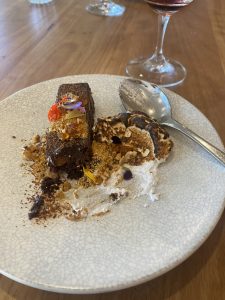
Lunch was the chef’s grazing menu at Ottelia. Ottelia is both a winery and a modern bistro-styled restaurant. The dining rooms are bright and light, and the food is just fabulous. While we were enjoying our grazing menu of multiple small dishes, many other patrons were trying the pizzas, which also looked pretty special. Our favourite dish was the brownie for dessert! That does not mean the other dishes were not also excellent.
We also enjoyed a selection of wines, with our favourite being the 2020 Graciano. It’s a Spanish variety and, like so many of the Mediterranean styles, grows well in our climate. It’s a very food-friendly wine and one I am sure we will enjoy again.
After lunch, we returned to Wynns and, with a glass of the Pedro Ximenez, returned to the cellars for a final look.
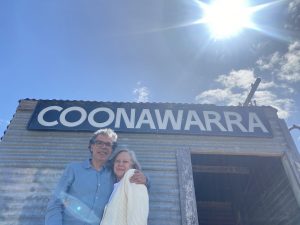
Coonawarra Siding
From there, it was a visit to the historic siding before a visit to Katnook, another historic winery of the region and then our final winery of the day, where our host had arranged a chat with the winemaker, Stephen Raidis.
We knew nothing of Raidis winery but, over the next hour or so, got to know its origins and philosophy. It’s a fairly new winery that definitely harks back to its Greek heritage.
Stephen’s parents had been market gardeners, and then, with Stephen returning to the family business, grapes were planted in 1990.
Raidis may not be the front of mind for a visit to the Coonawarra, but perhaps it should be. The wines are fresh, and the stories behind the wines hark back to family. It is a winery where a sense of place is everywhere. What a gem.
The significance of the goats stems from their being used to clear the vineyards.
After an enjoyable hour with Stephen, our day was done, and our tour host dropped us back at our apartment. What a great day! All that was left was to wander down the local supermarket to buy some cheese and prosciutto to have with a glass of red and an early night before we headed off to Mount Gambier to look after our grandchildren.
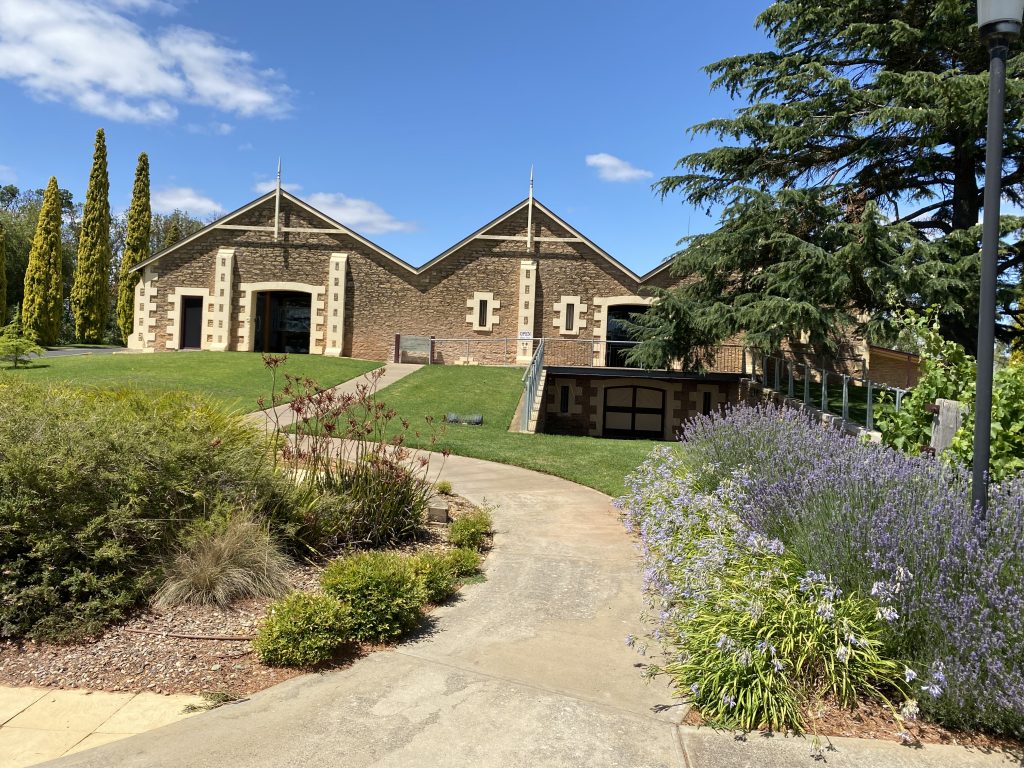

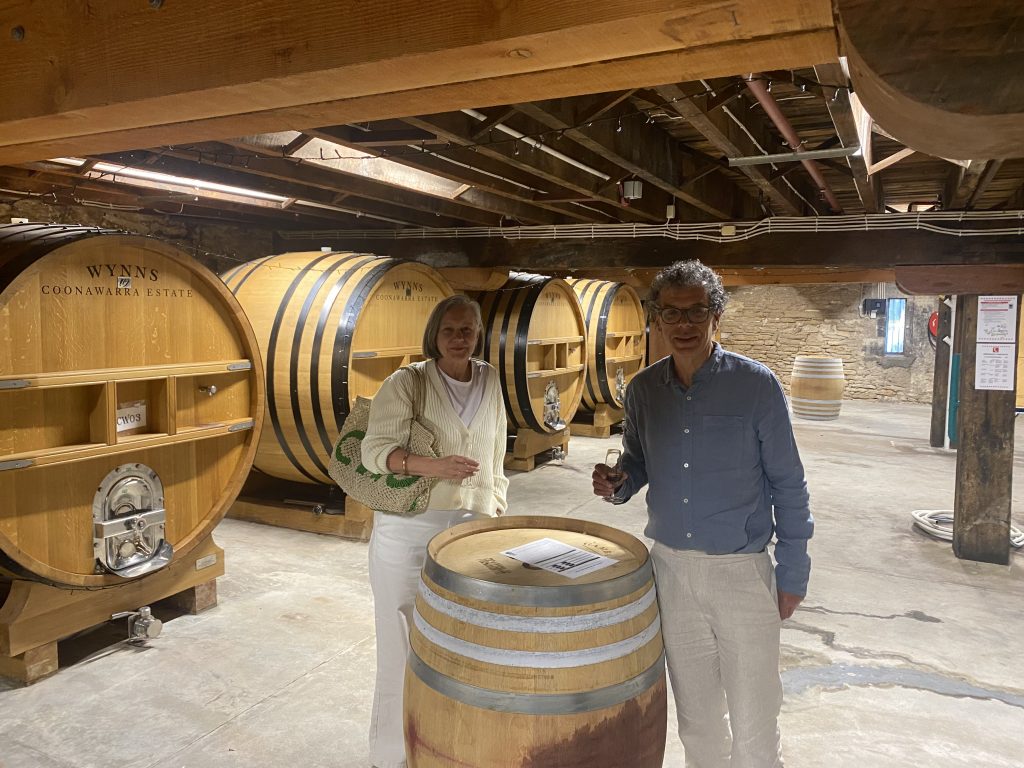
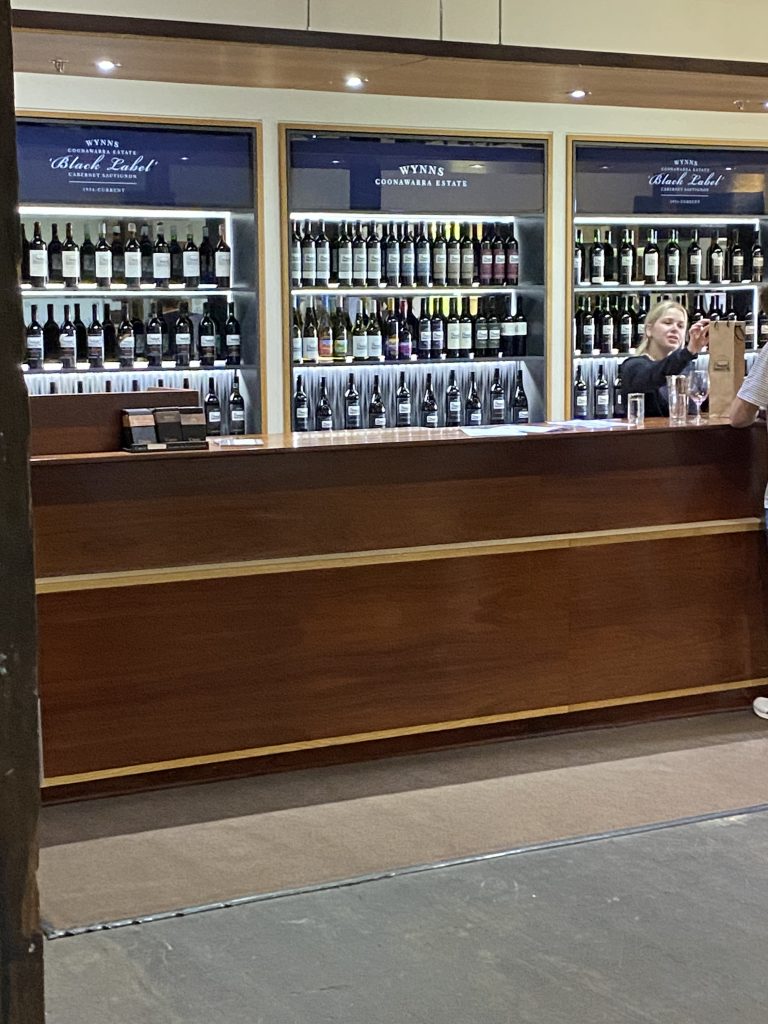
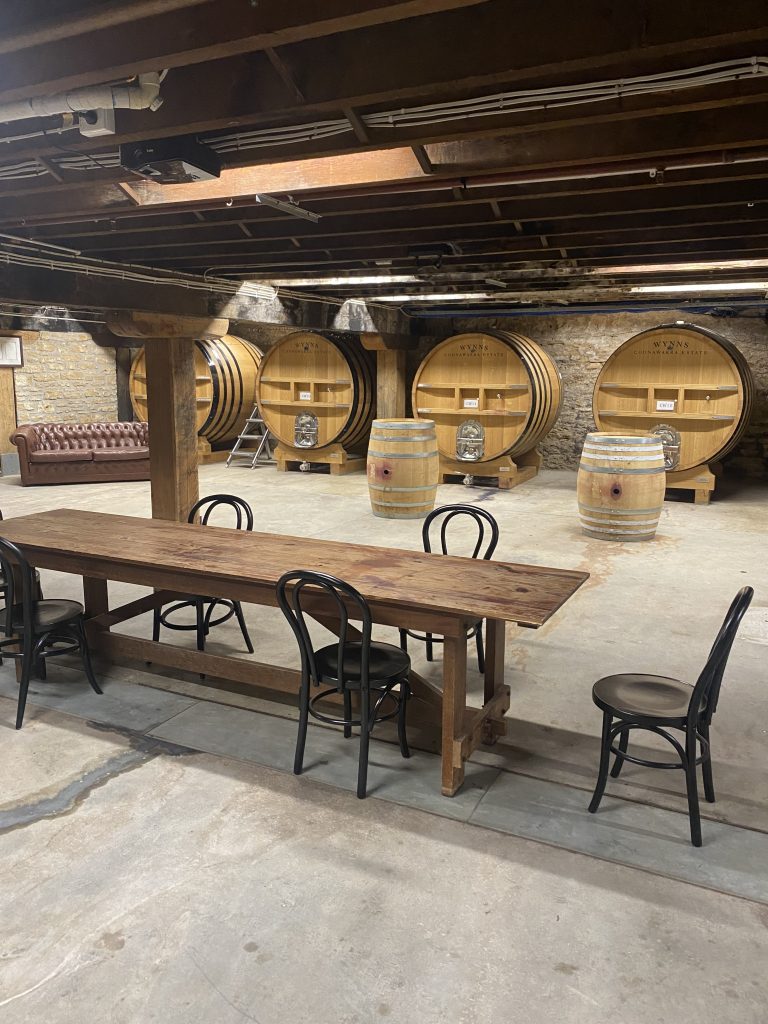
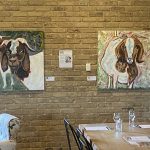
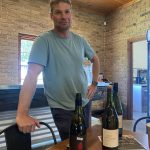
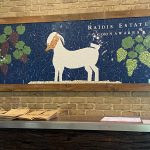
Pingback: A few days in the Coonawarra – Day two wine tastings and lunch | browney237's Blog